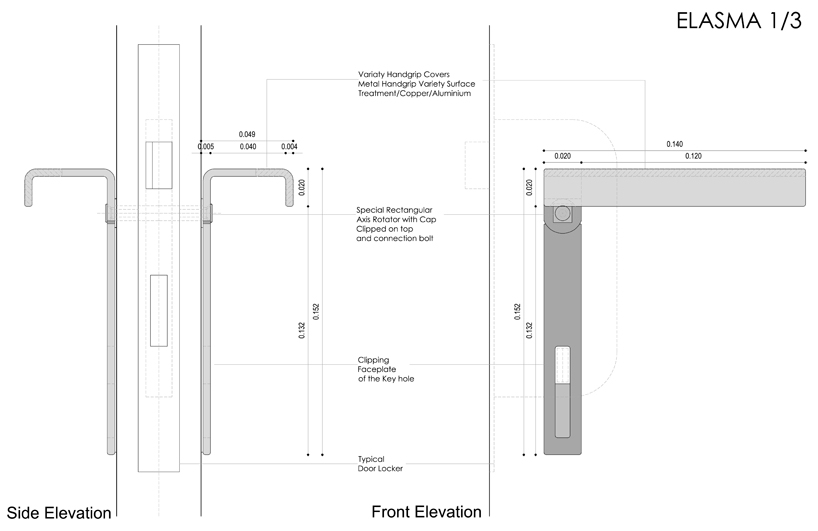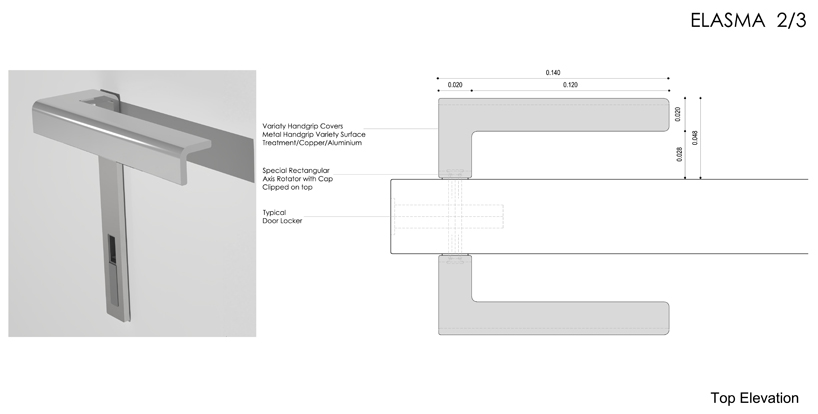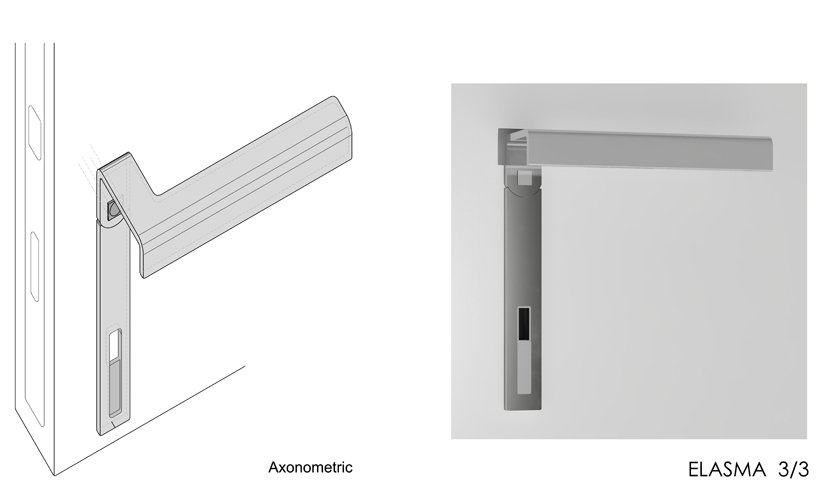
ELASMA DOOR HANDLE by andreas kyranis from greece
designer's own words:
The designed product is a result of an unfolding that occurs in a rectangular net section sized 4x20 mm resulting from a paper cutting process, cutting a sheet metal plate thickness 4 mm by a CNC. The door handle has a reference to forged handles that can be found in pre-industrial rural settlements resulting from configurations and cut to plans made on hand of small sheet surfaces.
A door handle that has references to Early industrial production but to be produced requires Post industrial procedures.
Postindustrial utmost precision CNC machines
Simplicity /Purity /Frugality
The functional parts are trying to express themselves in a compositional totality
The whole product endowes gravity with far more than the minimum satisfactory
The movement of rotation and the hole for the key are mere gestures cutting-removing material from the baseplate
TECHNICAL DATA
Materials: stainless steel, aluminum, zamak, inox.
Texture: glossy or matte and different surface treatment
Finishes: edges with a radius of 0.5 to 1 mm, soft finishes that do not injure
Technology: the product could have been produced into the 19th century with mechanical engineering and handcrafted tools from a very good master of crafts with high cost
Production method: today probably the best way of producing the door handle it would be through the following stages:
Casting and molding of the basic quorum
Detailed machining on CNC milling
Polishing-finishing sander by robots
Final finishing procedures plating in succeeded bathrooms
Treatment only in CNC milling machines and handmade mat polishing with only protection some very fine matte varnish
RESPECT WITH THE STANDARD ACCESSORIES MARKET
The products can be adapted to any common lock out in the market with the prefabrication of some special components:
Special square rotating pivot axis with the standard cross-section who will be able to host allen bolts and the possibility of related reduction and increase in response to the different door thicknesses. The apparent axis in the working parties will have the same surface treatment as the apparent remaining parts.
Special washer frames for stiffness adjusting the door knob on the shaft axis
A special very thin rotation washer in connection with the door knob with small bidet interpolation bearings. The spring-loaded operation relies on the ability of the spring locks.
SIDE AND FRONT ELEVATION
 TOP ELEVATION AND PHOTORALISTIC VIEW
TOP ELEVATION AND PHOTORALISTIC VIEW
 AXONOMETRIC AND PHOTOREALISTIC VIEW
AXONOMETRIC AND PHOTOREALISTIC VIEW